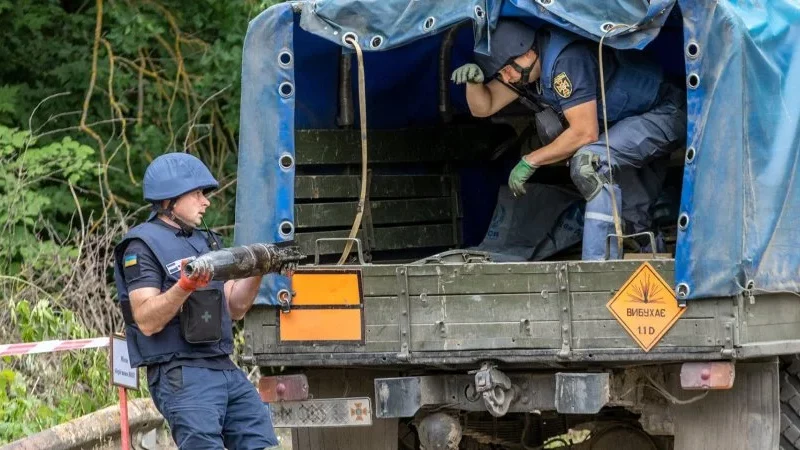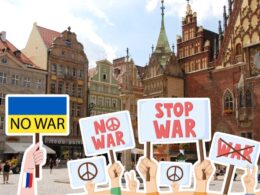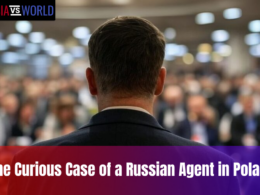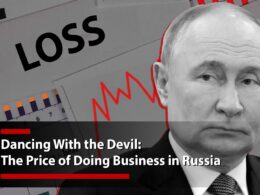In the occupied territories of the Sumy region, the Russians left behind bad memories, as well as shells and mines, with which employees of the State Emergency Service are forced to deal.
The small roadside market in the village of Boromlya, located in the Sumy region, south of the regional center and near the border with Russia, now sells the two most important goods – strawberries and honey. And the strawberries are a local pride: the residents of Boromlya claim that they are the tastiest in the region.
But the seller of honey does not want to talk about strawberries. Looking at the road and the surrounding houses, damaged by shelling, he recalls how in early March the Russians occupied their village for almost a month. “They wandered here and there. 500 units of equipment. BMPs, tanks, everything in the world. There were a lot of soldiers, ”said a resident of Boromlya.
There were both Russians and Buryats in the village, but most of them were separatists [from “DPR”]. The man remembers a case when he passed one of their checkpoints, going to his brother, who lives in another part of the village. The occupiers checked the documents and let them pass. And they also said that he could even drive to his brother. “We’ll just draw a Z in your car, sit down with you and carry everything you need,” they suggested. “I tell them: I don’t need to transport anything and draw a Z on my car, especially,” the man explains.
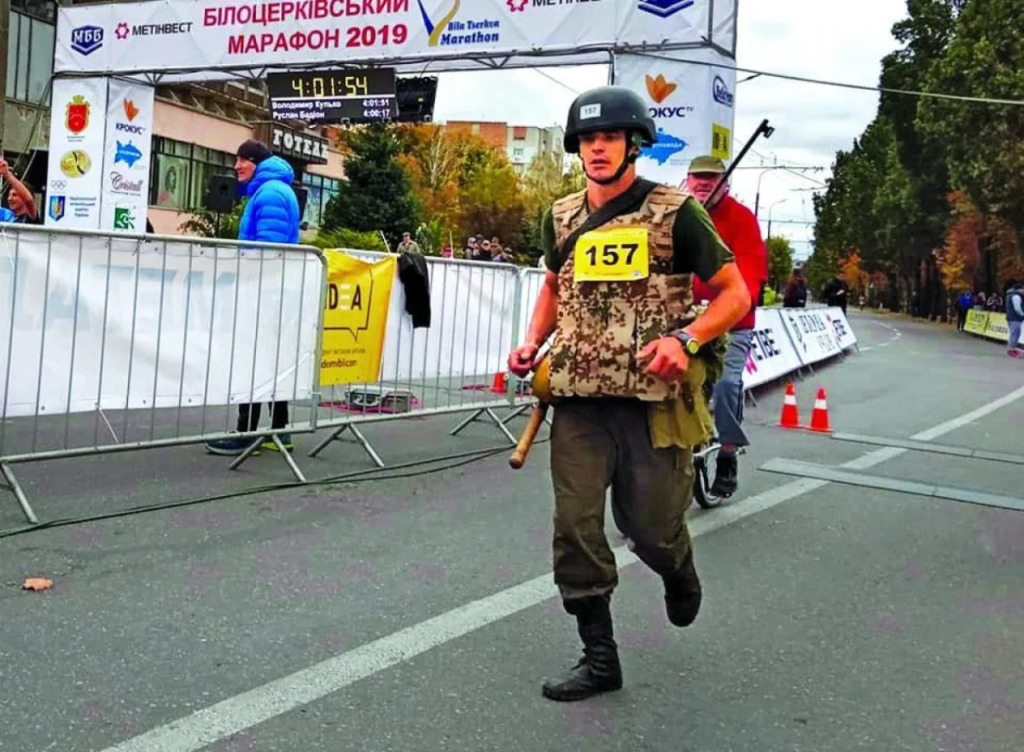
Not far from the market, volunteers who came here from Sumy, in cooperation with rescuers from the State Emergency Service (SES), are dismantling stones in the yard where the gas service used to be. After the bombing, only debris remained.
Sumchanka Natalia, one of the volunteers, came to Boromlya for one day. Usually she works in a boiler room, but this is a seasonal job for the cold season. “I am sitting at home now. So I decided to help the community, signed up as volunteer,” explains Natalia, holding stones in her hands.
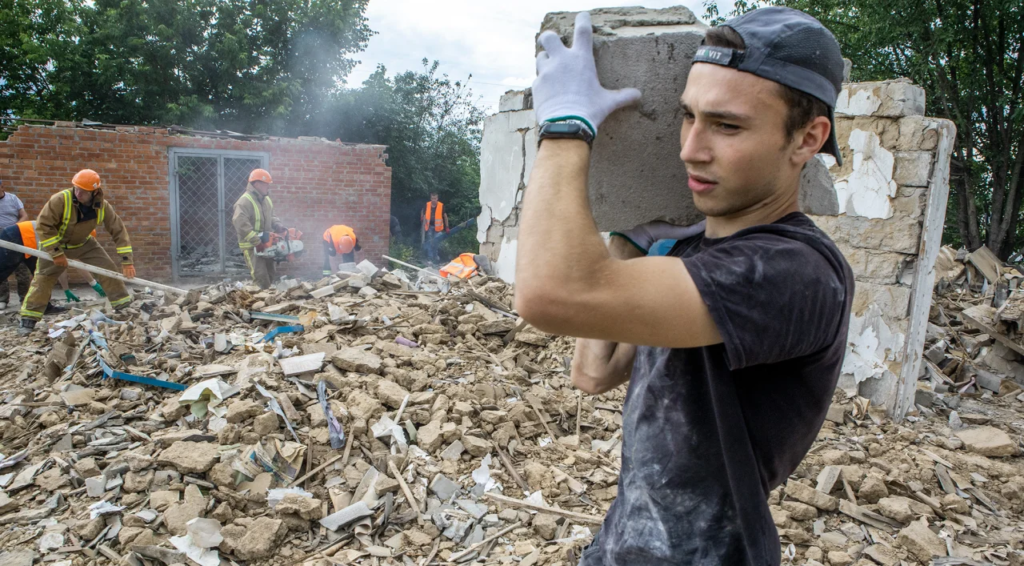
Oleg Strilka, a spokesman for the Sumy Region State Emergency Service, recalls the times of the occupation of Boromlya in his own way: “There was a totally badass vigilante here.” He explains that 32-year-old Serhiy Pronevych, a local athletics coach, threw Molotov cocktails into Russian tanks and passed information about the location of enemy equipment to the Ukrainian military. “Imagine: March, mud, and he took Molotov cocktails, ran 17 km through the fields and threw them into tanks,” – says Arrow.
Pronevych was a local legend even before the full-scale invasion: in 2019, he ran a 42-kilometer marathon in full military ammunition – body armor and helmet. And got into the Book of Records of Ukraine.
He fought successfully against the enemy, but in the end the Russians shot the guerrilla.
Russian “surprises”
NV, together with SES officers, goes further south, in the direction of Trostyanets. Along the way, Strilka reminds us that the Sumy region has the longest border with Russia – almost 600 km, and borders three Russian regions – Bryansk, Kursk, and Belgorod. Therefore, as soon as the full-scale invasion began, the region immediately found itself under partial occupation.
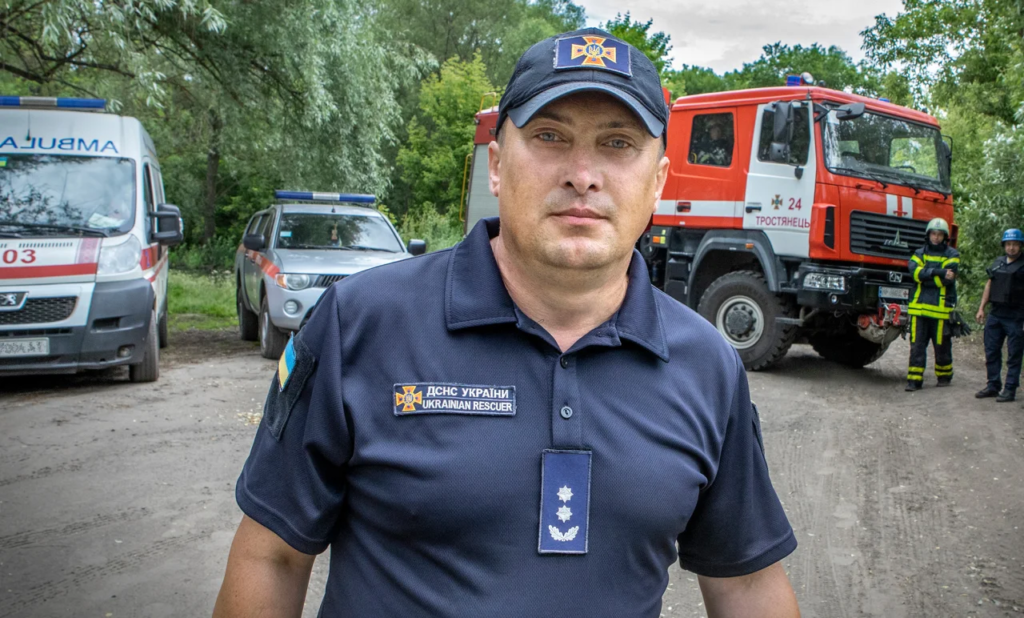
Now the region is completely free from the Russians, but when the enemy retreated, it left behind many “surprises” with which the SES has to deal.
Roman Pomazan, head of the part of humanitarian demining and special pyrotechnic works of the State Emergency Service of Sumy Region, says that in cooperation with specialists of the National Police and the Armed Forces, local pyrotechnics have already cleared 1.3 million hectares in the region. Namely: roads, critical infrastructure, railways, and housing.
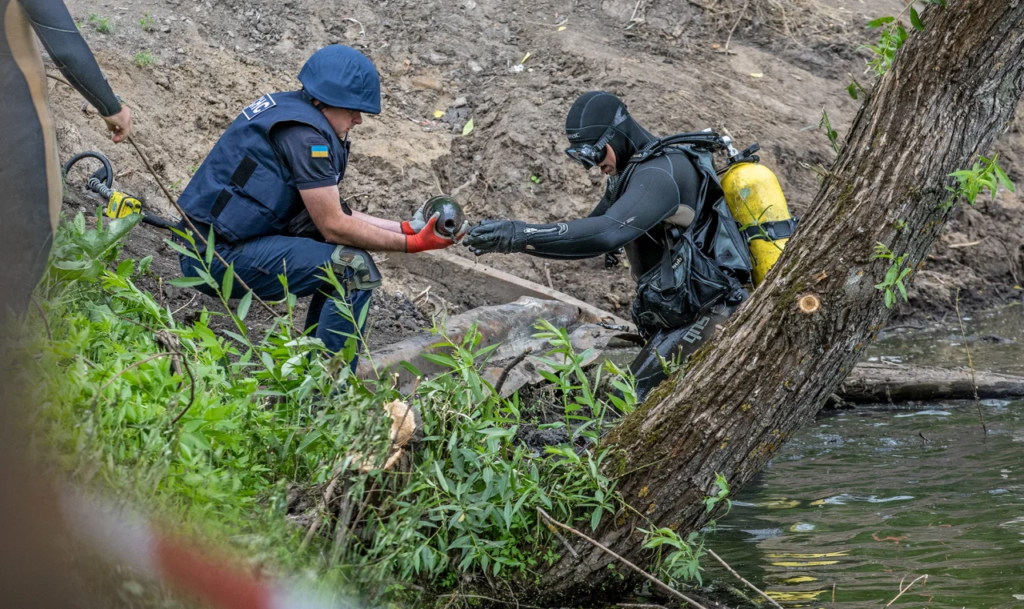
Pyrotechnics have already destroyed more than 5,000 explosive devices in the region, but continue to find new ones.
NV talked to Pomazan near one of the silted ponds near Trostyanets while a diver was working there. After all, an enemy tank, in which ammunition detonated, was destroyed nearby in the spring. And it is likely that not all the shells exploded – some of them could be underwater, covered with oil stains. Therefore rescuers check a reservoir.
Mykola Kharchenko, a 26-year-old diver, dives into a pond with a metal detector and later retrieves as many as three 125-millimeter shells from a tank cannon. He in turn transfers them to a pyrotechnic, who puts a dangerous cargo in a car that will take the shells to the blasting site. “The bottom is very muddy, dirt to the knee, nothing is visible,” explains Kharchenko, adding that a metal detector helped him.
Russian base
Pomazan admits that there is still a lot of work to be done in the 20,000-populated Trostyanets, which was under Russian occupation until March 26.
Together with the rescuers, NV arrives at the former brick factory, where the Russian tank unit was based. Here were tanks and armored personnel carriers. 50 occupiers lived in the administrative building. “Everything around was mined, there were trip wires and trenches,” says Pomazan. From the territory of the plant, the Russian military shelled Okhtyrka.
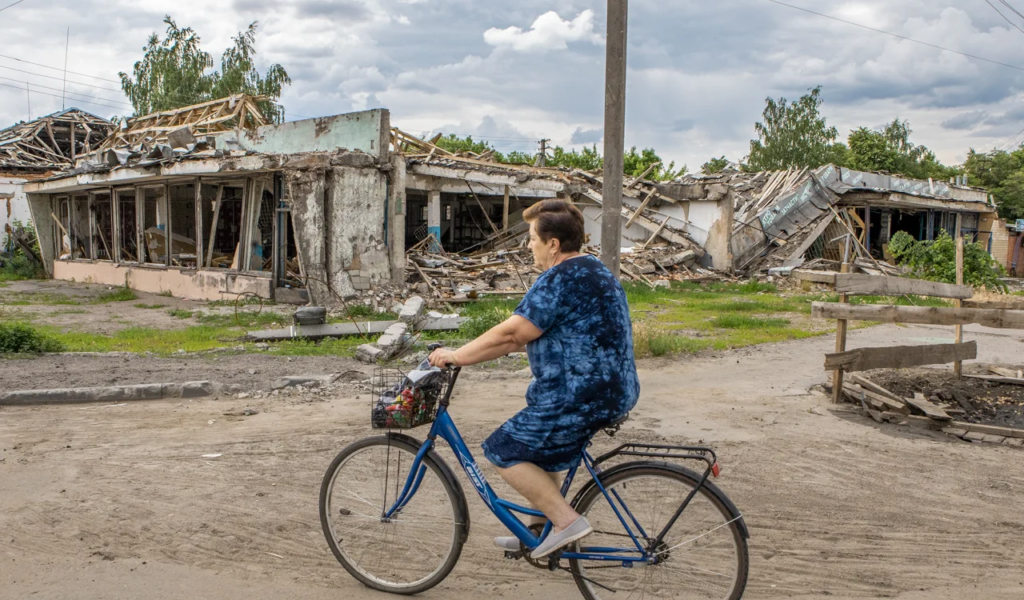
In the production shop, there was an ammunition warehouse, which was hit by Ukrainian artillery – everything exploded, explains Pomazan.
The afforestation near the explosives plant has been inspected for a long time, but the administrative building where the tankers lived was inspected by journalists.
Sapper Serhiy Garmash, who works with his 7-year-old dog Luna, says it found a grenade under the window. And in recent months, his four-legged assistant has found three dozen of them.
Another dog is looking for an explosive nearby.
Once one of the dogs smells the danger, the other must confirm the finding. Only then do the sappers get it.
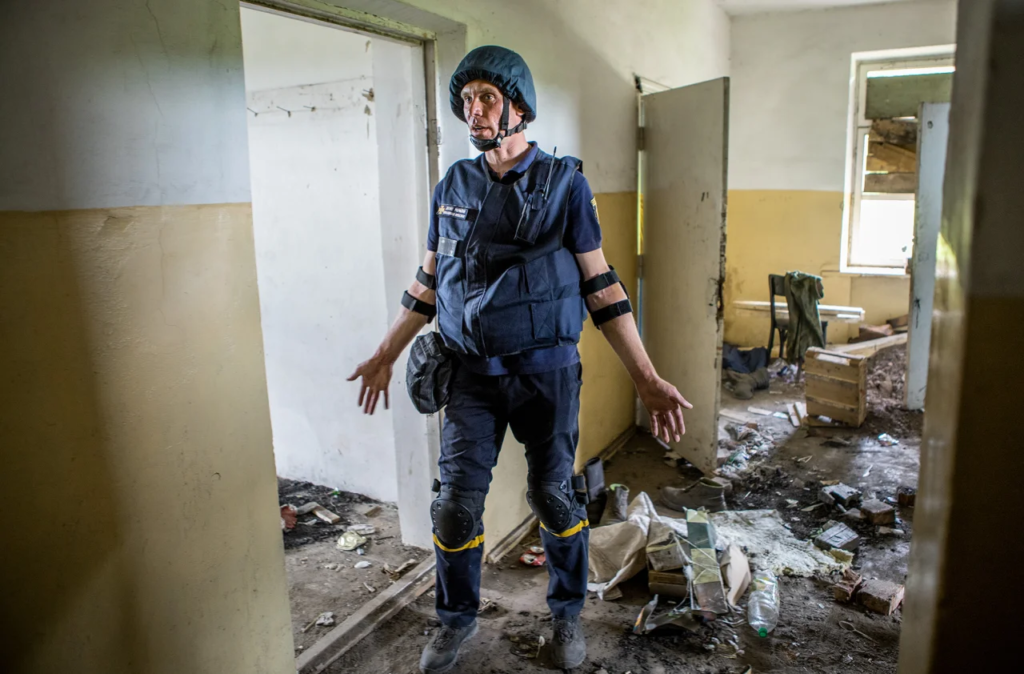
While the dogs are working near the administration building and pyrotechnics are removing Russian TM-62 anti-tank mines found inside, Denis Karpenko, head of the Sumy Oblast State Emergency Service, tells how rescuers worked in the region during the occupation. According to him, they still put out fires and went on calls – even those units that were located 2-3 km from the Russian border.
The occupiers did not harass the firefighters, but it was still extremely difficult to work. Yes, there was no communication, no light, and no water in occupied Trostyanets. When one of the five-story buildings caught fire, rescuers arrived and extinguished the flames, but the enemy did not allow them to leave the city to refuel. Therefore, SES representatives replenished their tanks by draining water from the heating system of the fire department building.
“Where there was an opportunity and where there were no active hostilities, we tried to work,” Karpenko adds.
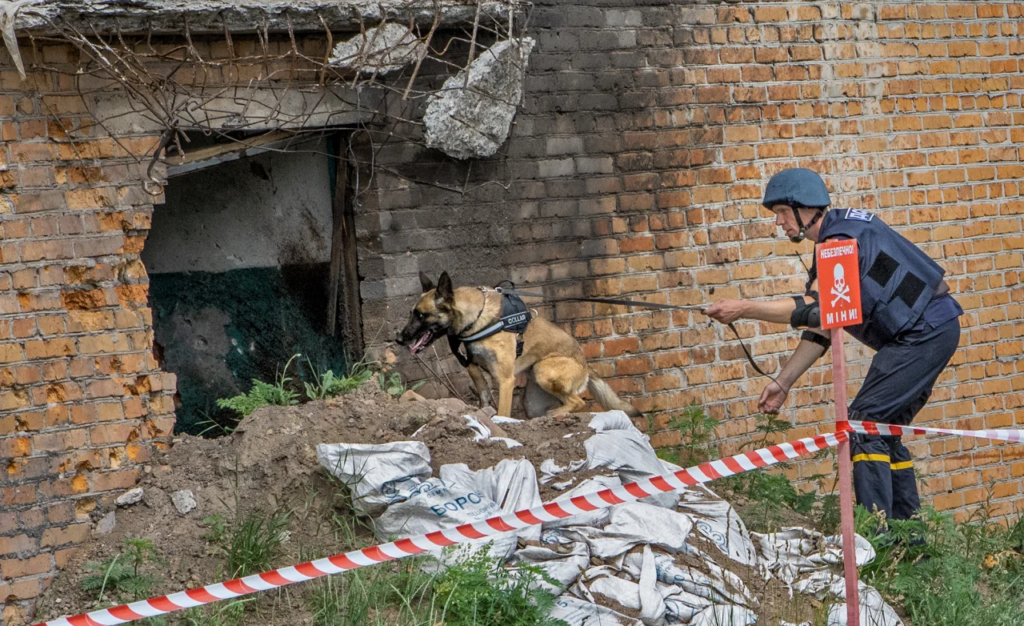
During the occupation, his subordinate was killed: on the morning of February 24, the commander of one of the rescue units went to work and came across a column of enemy vehicles. “We found him the next day in the landing: the car was shot and he was inside,” Karpenko recalls.
Meanwhile, pyrotechnics have finished their work and allowed journalists to enter the factory administration building.
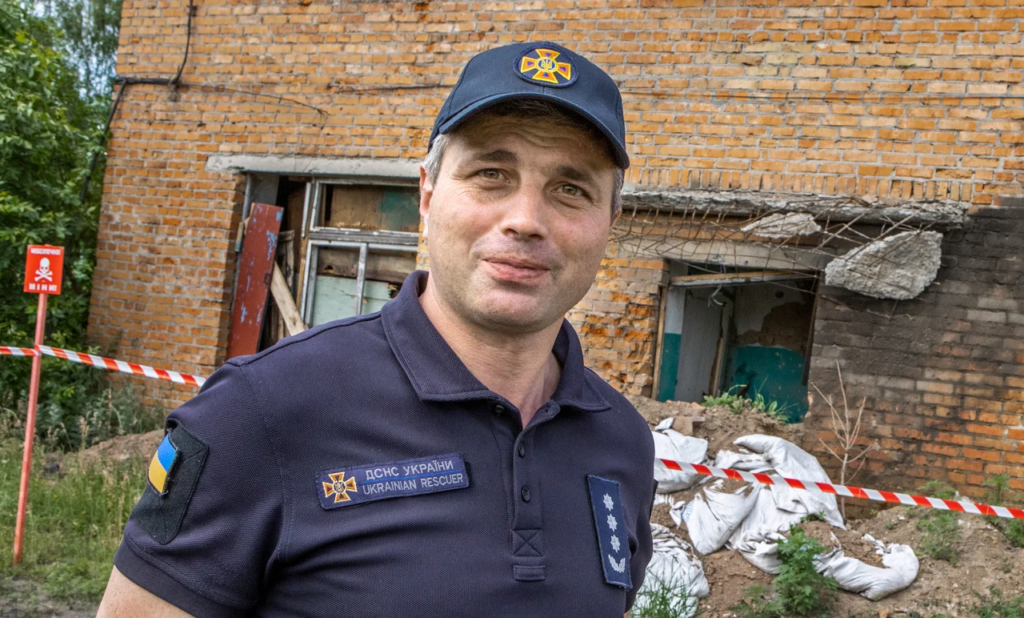
Inside – the remains of the clothes of Russian tankers, piles of garbage, painted “tanks” and obscene inscriptions on the wall. Among others – this one: “I want caviar and lard, I’m fucking sick of everything.”
Finally, NV asks Sumy demining specialists of how they worked before the full-scale invasion. The boys are smiling: they say that these were rare finds from the Second World War. But now we can forget about them: the current war leaves behind many “surprises”, and they will have to work with them for a very long time.




